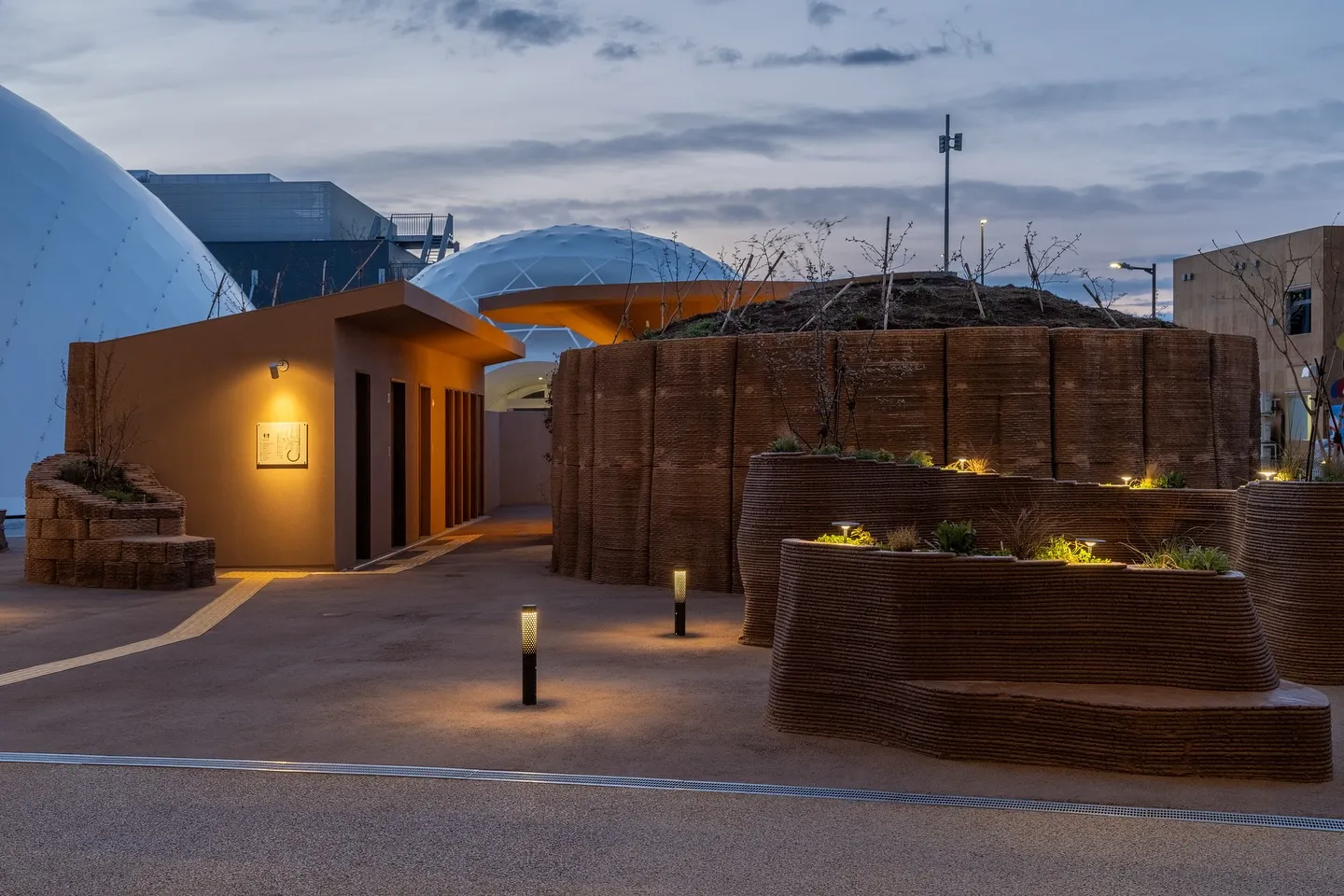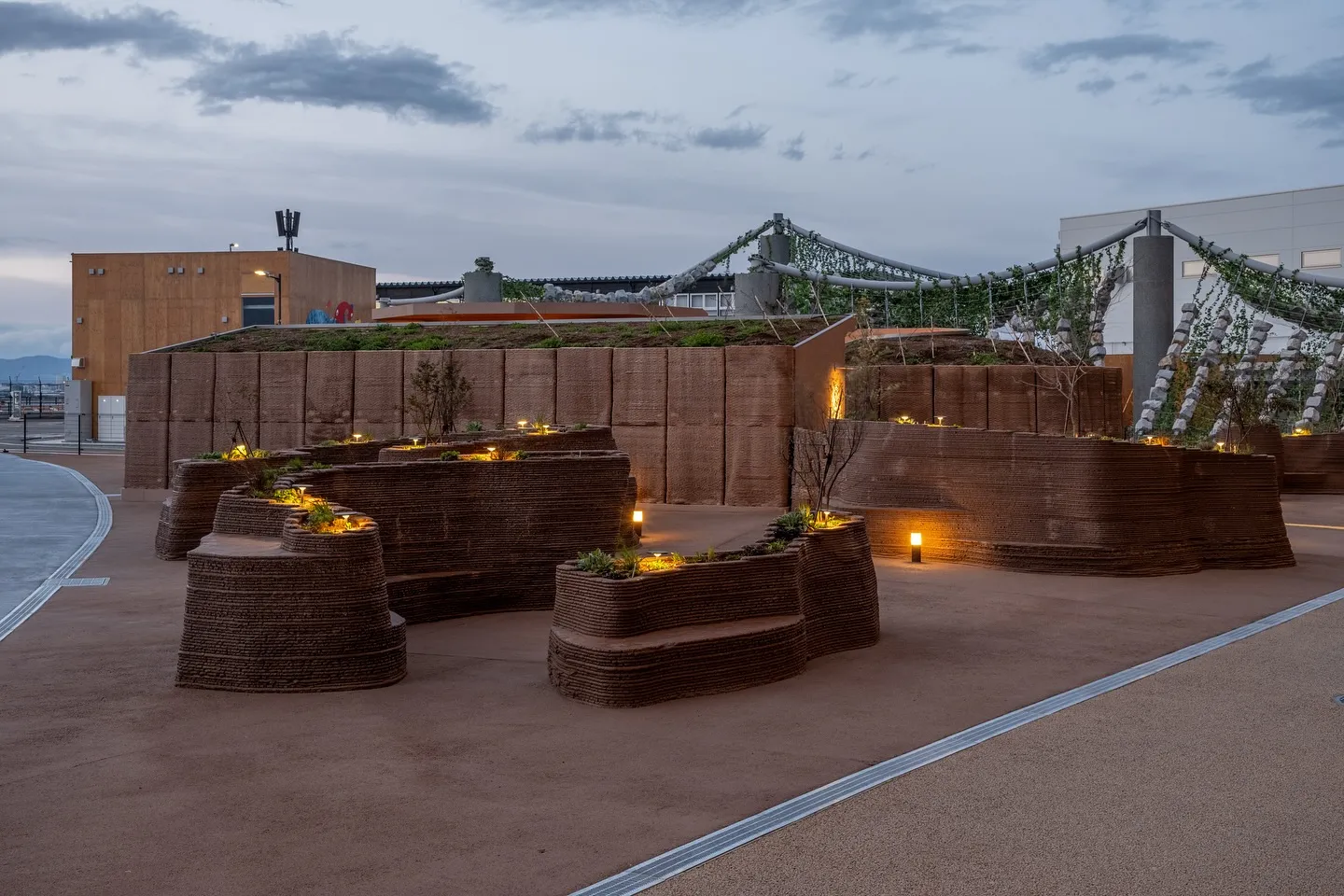Japanese architecture firm Aki Hamada Architects has unveiled a 3D-printed rest facility at Expo 2025 in Osaka. The structure features seating areas, toilets, a satellite studio, and a small stage, all constructed using a large-scale 3D printing system from Italian company WASP. This project is part of a national initiative that includes 20 pavilions designed by emerging Japanese architects.

The rest facility was built using locally sourced materials including clay, straw, seaweed glue, pigments, and a magnesium oxide-based hardener. These biodegradable components can be disassembled or decomposed after the event, leaving no environmental impact. The construction method honors Japan’s traditional earthen wall techniques while incorporating modern 3D printing technology.
WASP’s Crane WASP Stand Alone printer was used to create various components both on-site and at a facility in Toyama. The printed elements were cured for three days in a humid environment before being air-dried to gain structural strength. Timber framing and wooden inserts were used to anchor the panels, allowing for modular assembly at the Expo site.

The design draws inspiration from Japan’s geological landscape, with the architects 3D scanning rock formations from across the country. These scans were used to generate composite geometries that were tested for stability and then optimized for 3D printing specifications. “We wanted to present a glimpse of a future society in which humans, nature, and machines coexist,” said principal architect Aki Hamada.
Some components, such as planter-benches, were printed directly at the Expo using the printer’s 6.2-meter diameter and 1.7-meter height build volume. Other elements like modular earthen blocks were reinforced with bamboo rods instead of steel rebar, maintaining the project’s ecological focus. Washbasins were printed off-site and fitted with concealed plumbing access panels.
This project emerges amid growing interest in 3D printing for architectural applications across Asia and the Middle East. Earlier this year, JR West and Serendix created a 3D-printed train station at Hatsushima Station, constructed in just six hours between nightly train operations. In Dubai, Proto21 recently completed what they describe as the world’s largest 3D printed architectural structure by volume, using over 21,000 custom-printed components.
Source: parametric-architecture.com

